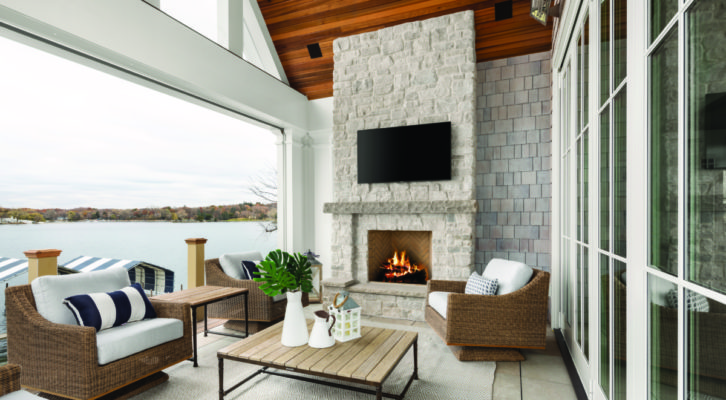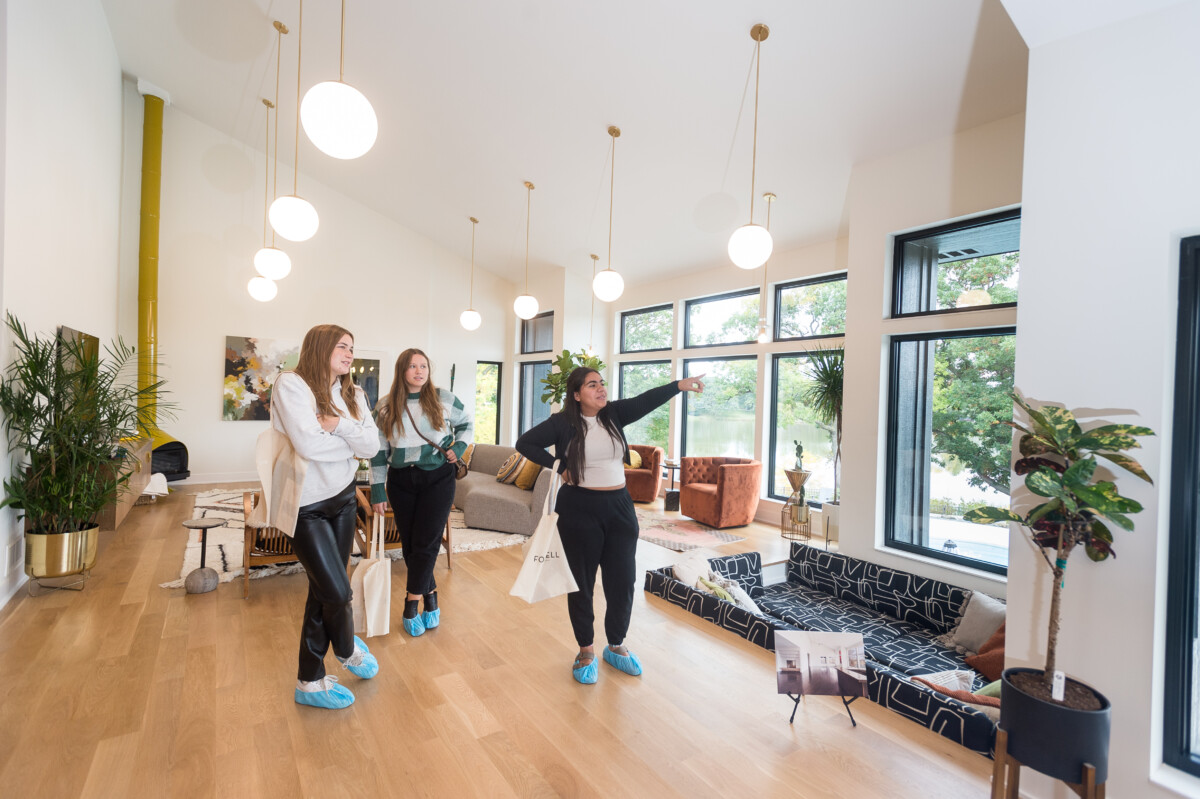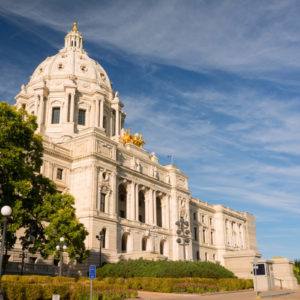Learn about the trends, technology, and benefits behind outdoor fire features—summer’s hottest (literally) home accessory.
Get ready to grab the s’mores kit. Summer is here and, after a year of staying indoors, outdoor entertaining is back and better than ever before. Maximizing on the “live, work, and play at home” mentality that has become the norm, housing industry professionals agree that outdoor living areas—which prominently feature fireplaces, fire pits, and fire tables—are becoming more popular in new construction and are a must in higher-end custom and luxury homes.
“Everyone is doing some sort of fire feature,” says Mitchell Zechmann, the commercial and multifamily sales representative for Fireside Hearth & Home. “It’s about bringing your family and your friends together outside. The big thing with us Minnesotans is that we try to eat up every second of spring, summer, and fall outdoors so we can go hibernate in winter.”
Before you start gathering sticks and lighters, here’s what you need to know about the trends, technology, and benefits behind today’s outdoor fire features.
Gas is the way to go.
Zechmann estimates that 99% of the outdoor fire features he installs are gas rather than wood-burning. In addition to the convenience factor of being able to start a fire with the flip of a switch (no more fighting to light wet wood), gas fireplaces don’t produce smoke, meaning you won’t have to worry about that bonfire stench sticking to your clothes and hair.
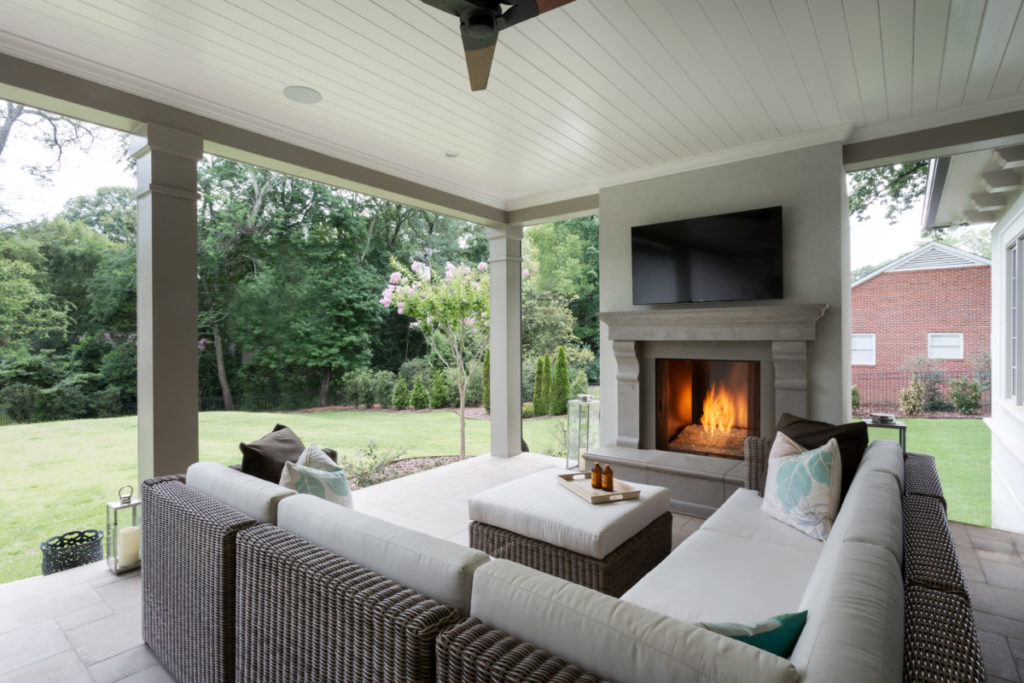
Safety first.
Forget about dumping buckets of water on your fire pit to put out the flames. After you shut off a gas fireplace, you can walk away with peace of mind, knowing that no remnant coals or ashes will spark an unintentional fire. Taking safety one step further, new ignition systems are built to automatically stop the flow of gas if the flame goes out for any reason.
Customization is key.
Just like interiors, homeowners want outdoor fire features to represent their individual style and personality. Concrete is currently the finish of choice, according to Zechmann, but other popular options include brick, stone, and stucco. Fireplace fillers can also be customized with materials like lava tumble rock or ceramic stones for a more organic, natural look, or glass beads for a modern touch.
It’s all about ambiance.
Outdoor fireplaces can be used to create a private oasis by strategically blocking views into a neighbor’s backyard, while dual-sided, see-through installations maximize sightlines to the surrounding nature. LED lighting installed around a fire pit or fire table improves visibility at night and adds a “wow” factor for outdoor gatherings.
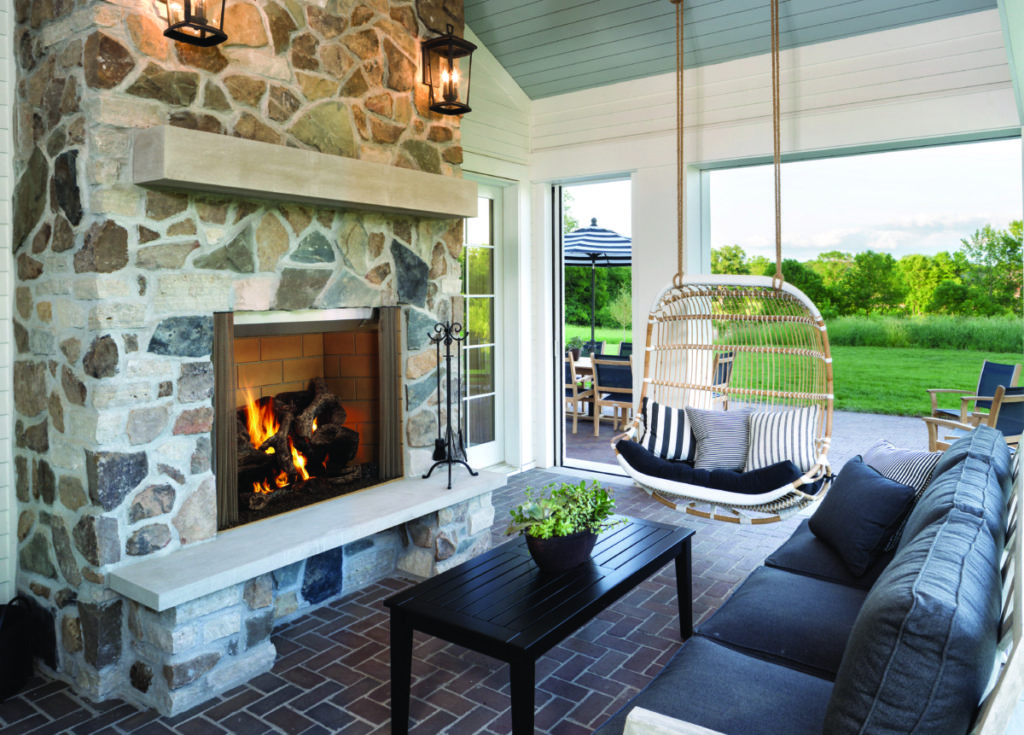
Smart technology.
Homeowners can now add their outdoor fireplace to the list of home amenities that can be controlled with their smart devices. Using Bluetooth connectivity, turn flames on and off, and even adjust the flame height and temperature.
Whether you prefer the grandeur of a traditional fireplace, or the modern aesthetic of a sleek fire pit or fire table, outdoor fire features offer benefits for both builders and homeowners. Outdoor living spaces set new construction homes and multifamily properties apart from others in the market, appealing to homeowners looking to achieve the warm, cozy atmosphere fire features provide—often at a lower price point than indoor fireplaces, since no venting system is needed. “I see outdoor fire features on every single project,” says Zechmann. “It’s a trend that is growing dramatically, and I don’t think it’s going away.”
Written by Taylor Hugo | Article first appeared in the 2021 July-August-September Digest magazine

